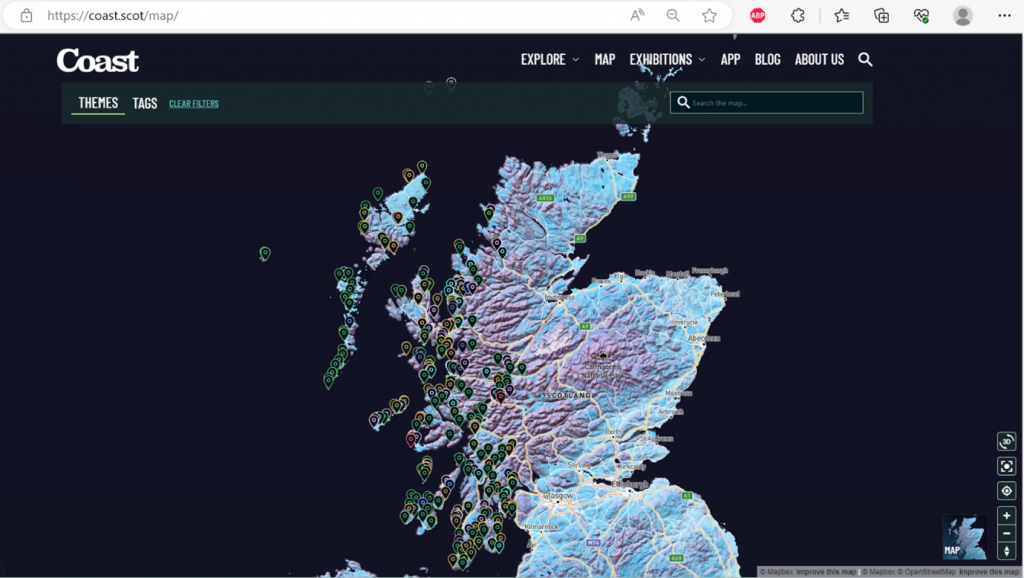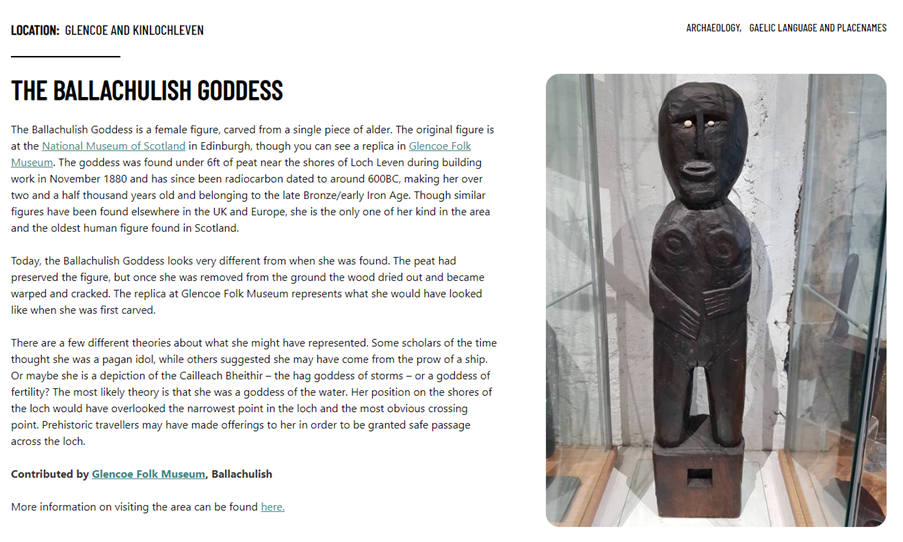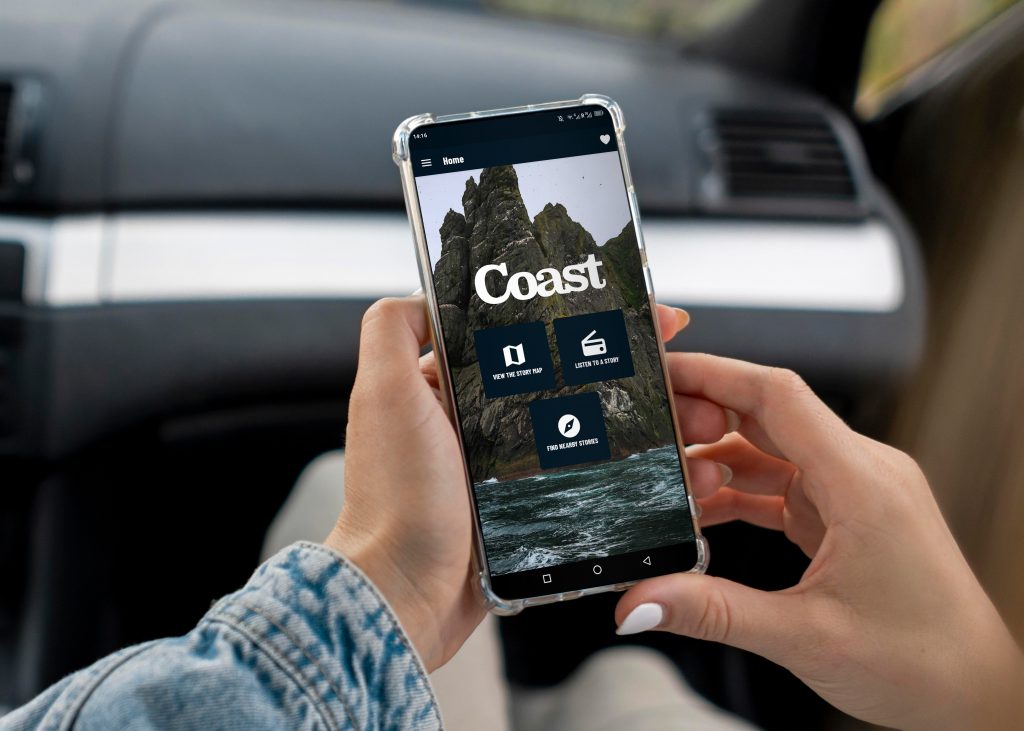
Katie Murray, project officer for ‘The Coast that Shaped the World’ project, reflects on its legacy and how it can continue to serve the west coast heritage and tourism sectors.
Attendees of the ‘Sealladh’ conference in April will remember that COAST is a UHI-led project that uses stories to encourage travel to less well-visited sites across the west coast and islands of Scotland.
The project employed a team of local story gatherers, from Wester Ross and Lewis in the north to Arran and Kintyre in the south, to uncover stories deeply rooted in place and of significance to locals. This was supplemented by opportunities for the wider public to share stories, through an online survey and during a series of digital workshops organised by region or theme.
The result was a bank of over 1300 stories celebrating the communities, heritage, culture and environment of the west coast and islands of Scotland. Almost 400 of these were curated, mapped and published on a website and app. The stories were also used in four small pop-up exhibitions that toured heritage and community venues and ferry terminals throughout 2022.


The stories are intended to encourage users to find out more about the subject and the area they come from. Where relevant we include the source of the story, or direct readers to books, websites or local heritage institutions where they could find out more. For example, those interested in delving deeper into the story of the ambush at Highbridge, the first armed conflict of the 1745 Jacobite uprising, are directed to a blog published by West Highland Museum. A story about open-air preaching site ‘An Cos’ references the wooden pulpit box used during services on display in Gairloch Museum.
One aim was to help alleviate overtourism at some of the busier sites, encouraging visitors to explore other places that have a rich heritage but which have remained off the beaten track. One of the most important ways we have done this is by seeking out stories that are not widely known, and geotagging these to a relevant site, monument or memorial. This is published in the form of a digital map available on both our website and in the app. We hope the stories will spur the curiosity of visitors and motivate them to see the sites where events happened for themselves.
All of the stories are published on the website. They can easily be found and accessed from here- as well as the digital map, they are also sorted by theme or subject matter such as ‘Jacobites’, ‘Shipwrecks’, and ‘Archaeology.’ This is also the best place to share stories from if you want to use them on your own social media to alert your followers about other local heritage sites.
In contrast, the app is specifically designed for users to experience and explore the stories while out and about. As well as the digital map, there is a ‘Find Nearby Stories’ function to allow for the easy discovery of content while on the move. Some of the stories have also been recorded by professional storytellers. It makes for an atmospheric outing, to read or hear a story being recounted while standing on site, or at a memorial or heritage centre.


While we will be winding down our digital presence, our Facebook and Instagram pages will remain live and represent an awareness raising campaign promoting stories and place spanning almost two years. Around a third of the stories were also published here and can still be searched and shared directly. We have also co-curated a series of COAST themed trails, on Arran, in Lochaber and in Wester Ross, which have been published by ‘Spirit of the Highlands.’
While the main exhibitions have been dismantled, individual panels containing the text of stories are being distributed throughout the west coast and islands for display in public, community and heritage venues so that visitors will continue to discover them while on the move. As far as possible we have sent the stories ‘home’ to their community of origin, for the benefit of locals and so that visitors can learn more about the area. Look out for these in, amongst other places, on Canna, in Glencoe, on Islay, on Skye and on Lewis. The website also hosts a virtual exhibition replicating the original displays for people to explore from home.
The contribution of the heritage sector has always been integral to the project, to showing support through the application phases to working with story gatherers and providing information and images. This is one reason why we were delighted to get such a positive response when we presented the final outputs during the Sealladh conference back in April. It’s been an eventful few years since the project began in 2019 and we are slightly in shock that this stage is coming to an end. We hope that COAST leaves a strong legacy and the west coast heritage sector will continue to be served by what the project has created. The website and app will be live until at least 2030. The stories are still there to be discovered and enjoyed- and ideally utilised to help visitors access and understand our rich west coast heritage, and to promote both the sites featured and the wider areas they belong to.
___
COAST has been part-funded by the ERDF Natural and Cultural Heritage Fund administered by NatureScot, with match funding from Calmac and UHI West Highland. The project is managed by UHI. Rural Dimensions and Lateral North were contracted as project coordinators, and Lateral North created the exhibitions. Whereverly were contracted to develop the website and app. The project ran in conjunction with Visit Scotland’s 2020 Year of Coast and Waters and the 2022 Scotland’s Year of Stories.
For more information email coast.whc@uhi.ac.uk
